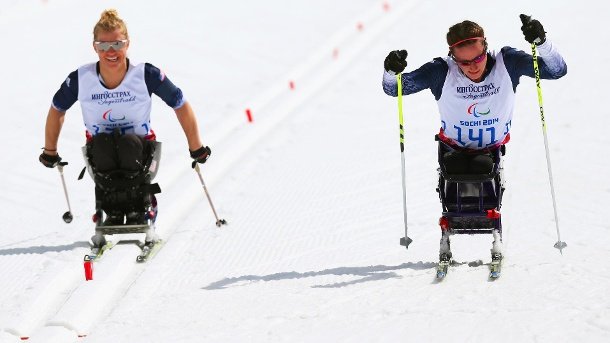600 athletes will compete in the Paralympics from Friday. What sports are there at all? How good are the Germans? And how do blind biathletes meet?
600 Athleten werden ab Freitag bei den Paralympics antreten. Welche Sportarten gibt es überhaupt? Wie gut sind die Deutschen? Und wie treffen sich blinde Biathleten?

What are the Paralympics?
After the Olympic Games, the Paralympics will take place, with athletes from all over the world competing against each other with handicaps. In Pyeongchang it is already the twelfth Winter Paralympics. From 9 to 18 March, around 570 athletes from 49 nations will be competing for medals. The games have officially been called Paralmypics since 1988. Already at the premiere they took place in South Korea.
Was sind die Paralympics?
Nach den Olympischen Spielen finden die Paralympics statt, bei denen Athleten aus aller Welt mit Handicaps gegeneinander antreten. In Pyeongchang sind es bereits die zwölften Winter-Paralympics. Vom 9. bis 18. März kämpfen rund 570 Athleten aus 49 Nationen um Medaillen. Seit 1988 heißen die Spiele offiziell Paralmypics. Bereits bei der Premiere fanden sie in Südkorea statt.

What sports are there?
In the six sports alpine skiing, biathlon, cross-country skiing, wheelchair curling, ice hockey and snowboarding, a total of 80 medal decisions have to be made. The competitions of the Paralympics are divided into three categories: sitting, standing or visually impaired. The races of the visually impaired are divided into three subcategories. B1 is the starting class for almost or completely blind winter sportsmen, B2 and B3 are the starting groups for athletes with a little bit more vision.
Welche Sportarten gibt es?
In den sechs Sportarten Ski Alpin, Biathlon, Langlauf, Rollstuhlcurling, Eishockey und Snowboarding sind insgesamt 80 Medaillenentscheidungen zu treffen. Die Wettkämpfe der Paralympics sind in drei Kategorien unterteilt: Sitzen, Stehen oder Sehbehinderte. Die Rassen der Sehbehinderten werden in drei Unterkategorien eingeteilt. B1 ist die Startklasse für fast oder ganz blinde Wintersportler, B2 und B3 sind die Startgruppen für Sportler mit etwas mehr Sehvermögen.

Who leads the visually impaired athletes?
Visually impaired athletes of all starting classes will be guided by an accompanying runner. He competes in alpine and Nordic ski races in front of the athletes and leads them through the races. The alpine skiers are additionally connected to each other via Bluetooth, while the biathletes communicate with each other on demand.
Blind biathletes only receive their laser rifle with which they aim at the targets at the shooting range. There, they are helped by an infrared signal which is converted into a sound.
The higher the pitch, the more likely they are to hit the target.
Wer führt die sehbehinderten Sportler an?
Sehbehinderte Sportler aller Startklassen werden von einem begleitenden Läufer begleitet. Er nimmt an alpinen und nordischen Skirennen vor den Athleten teil und führt sie durch die Rennen. Die alpinen Skifahrer sind zusätzlich über Bluetooth miteinander verbunden, während die Biathleten bei Bedarf miteinander kommunizieren. Blinde Biathleten erhalten nur ihr Lasergewehr, mit dem sie auf die Ziele auf dem Schießstand zielen. Dort hilft ihnen ein Infrarotsignal, das in einen Schall umgewandelt wird. Je höher die Tonhöhe, desto wahrscheinlicher ist es, dass sie das Ziel treffen.